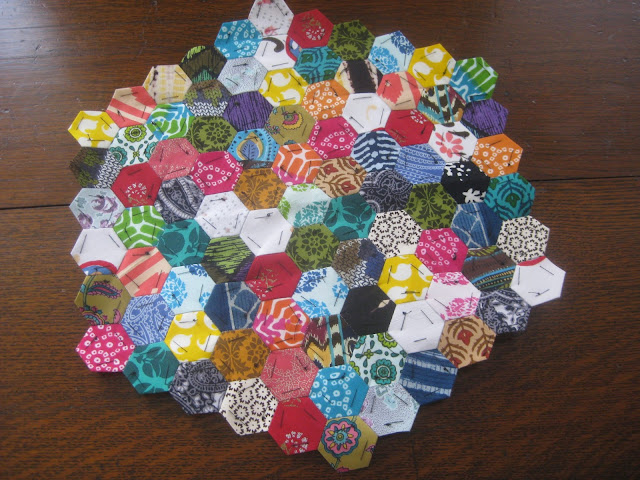As the weather has actually been getting quite nice of late, I have found myself wishing I had a couple more skirts to wear to work. In order for me to wear them to work they need to be of a decent length, which is where a lot of the problems have come in - I do have a fair number of skirts, but they're just too short!
I was therefore thinking about whether I could knock myself up a new skirt, and happened to come across some fabric I had stashed away whilst making a birthday present recently (see here). I figured that this would make a very nice skirt for the spring/summer, and set about looking for patterns/inspiration on the internet. In doing this, I found plenty of tutorials on how to make a circle skirt, and this fitted with the aesthetic that I wanted for my skirt.
I set about making myself a pattern for a circle skirt that would fit me, measuring my waist and doing the necessary calculations before drawing a quarter-circle on the back of a roll of wrapping paper. I also decided that I wanted pockets in my skirt, so drafted myself a pocket pattern, and cut out both the pocket pieces and the skirt pieces.
I didn't have a large enough piece of fabric to be able to cut out the whole circle at once, so instead had to make two semi-circles for the skirt, but this actually helped in some ways as it made inserting the pockets simpler. This was the first step in the construction of my skirt: sewing up the side seams and inserting the pockets into them.
This was the first time I'd ever attempted to make in-seam pockets, so I looked up how to do this on the internet, and took it quite slow, inserting the pockets around 8" below waist-height.
After both pockets were sewn into the side seams, I decided to sew a zigzag stitch all the way along the seam allowance, as the fabric I'd used frays a lot, and I figured this might help to keep the fraying to a minimum.
Having sewn the side seams of the skirt, the next step was to construct the waistband. I again drafted some pattern pieces on my wrapping paper, and cut out the pieces for the waistband. Unfortunately, I didn't quite have enough of the fabric, so I substituted a piece that I had spare for part of the inner waistband.
I ironed some fusible interfacing onto the front half of the waistband, before then sewing up each half of the waistband.
These two waistband pieces were then sewn together along both long edges with right sides together, before being turned out the right way and pressed. I then sewed a top stitch along the top edge of the waistband to help hold all the layers in place. The waistband was then sewn onto the skirt piece, using a french seam in an attempt to help combat the fraying of the fabric. (Although this did add slightly more bulk than I would have ideally liked.)
Then came to the fastening - I'd decided already to add a zip into the back of my skirt (hence why I left seaming that part of the waistband out), and simply had to slit into the centre back of the skirt piece down until I had a hole large enough for the length of the zip (20cm).
Finally, all that was left to do was the hem! So I turned up, pinned and pressed all the way around the bottom edge once and sewed around it. I then trimmed the excess fabric back and repeated the process so that the raw edge was encased in the hem - don't want any pesky fraying at the bottom of the skirt!
And, ta-da! all finished, and ready to wear on a nice sunny day.




















































